Supersonic and Hypersonic Aircraft Market is estimated to be worth USD 5.37 Billion in 2023 and is projected to grow at a CAGR of 2 % between 2024 to 2032. The study has considered the base year as 2023, which estimates the market size of market and the forecast period is 2024 to 2032. The report analyzes and forecasts the market size, in terms of value (USD Billion), for the market. The report segments the market and forecasts it by Speed, by Application, by Subsystems and by region/country.
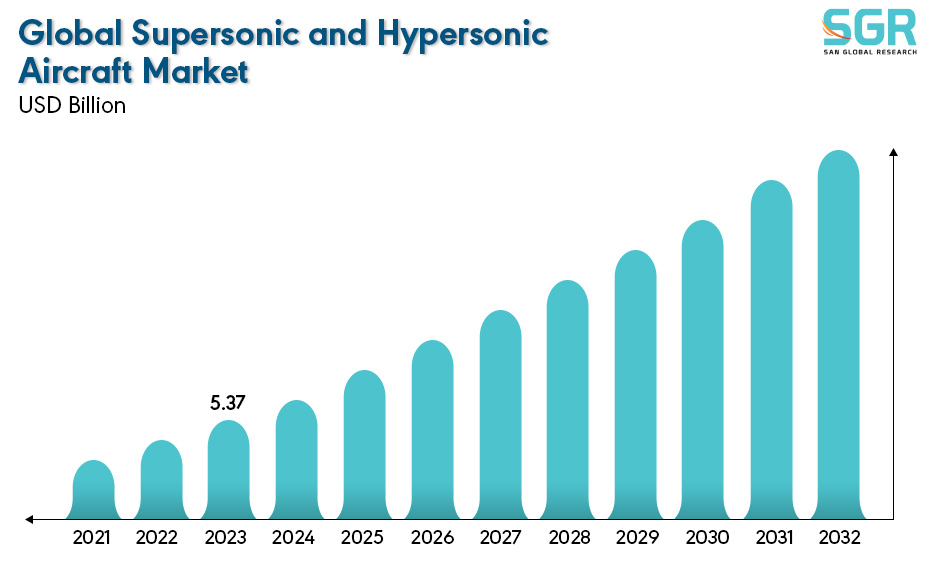
The aircraft industry has witnessed remarkable growth over recent decades, with a notable increase in the use of aircraft fuel over time. This growth is attributed to advancements in supersonic and hypersonic aircraft technology. Supersonic aircraft, capable of exceeding the speed of sound, breaking the sound barrier. Meanwhile, hypersonic aircraft can achieve speeds more than five times the speed of sound up to Mach 5.
Technological progress in supersonic and hypersonic aircraft has reached a level where some are anticipated to transport cargo or passengers across the globe in less than two hours. Despite their impressive speed capabilities, these aircraft often have lower passenger capacity due to the trade-off for higher speeds and lower fuel consumption.
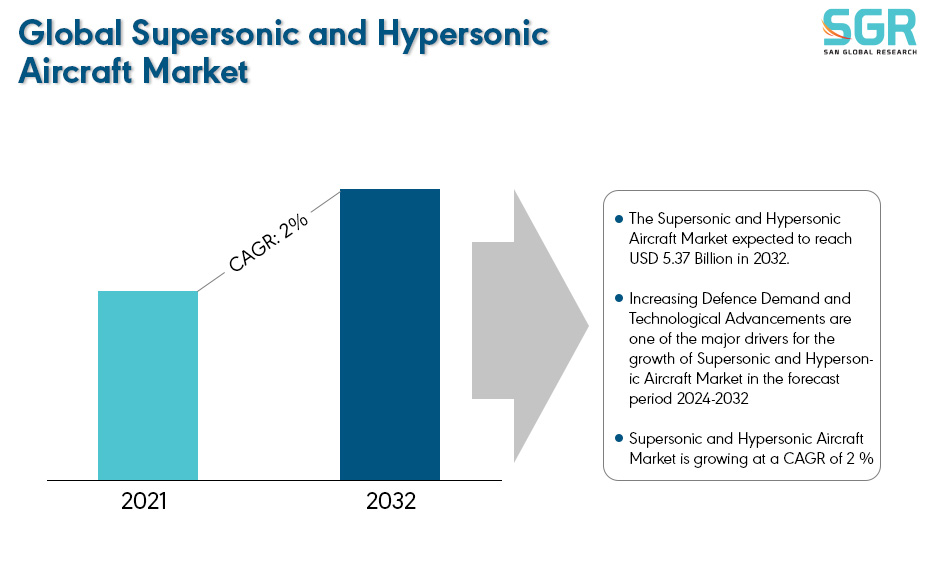
However, achieving supersonic speeds exposes these aircraft to increased temperatures caused by friction from high speeds. This challenge has led to opportunities for technological advancements and the use of versatile materials capable of withstanding higher temperatures and safely dissipating heat. Furthermore, jet engine designs have evolved to include scramjet engines, which have no moving parts and can propel aircraft to speeds exceeding Mach 12 and beyond. These advancements have fuelled expectations for significant growth in the Supersonic and Hypersonic Aircraft market.
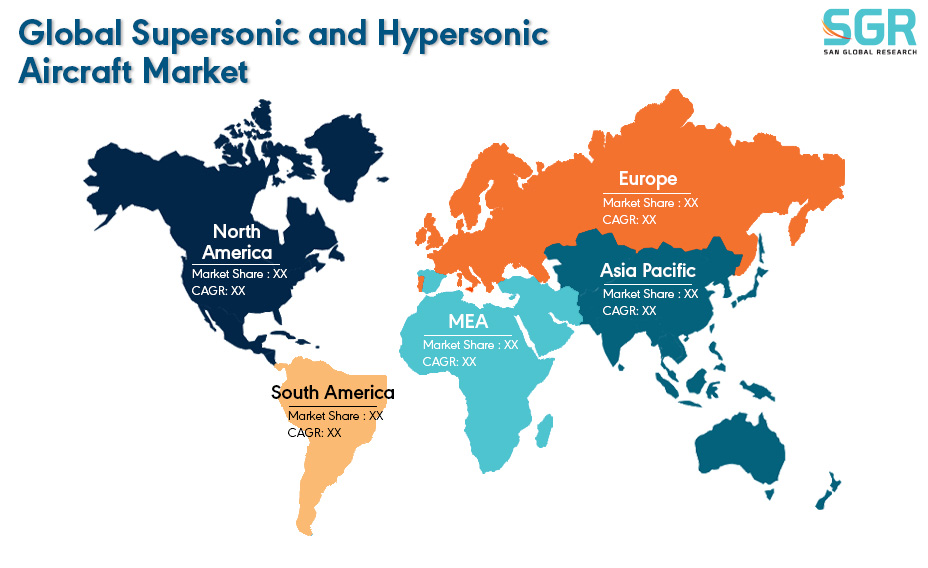
After reviewing the data shown below, it can be determined that the North America region dominates the Supersonic and Hypersonic Aircraft Market for the following reasons.
The North American region is dominating the Supersonic and Hypersonic Aircraft market. The increasing demand for defence applications, including modernization programs and the development of high-speed platforms for defence purposes, contributes substantially to the market demand. Additionally, the United States, being a leader in technological advancements in aerospace, particularly in avionics and propulsion systems for supersonic and hypersonic technologies, has contributed to the market's expansion. Shifting focus towards the commercial segment, companies like SpaceX and Boeing are investing in the commercial application of hypersonic technology. The concept of hypersonic travel, with its significant benefits in reducing intercontinental flight times, has garnered significant interest from both aerospace companies and travelers.
The Asia-Pacific region is anticipated to experience a substantial surge in the Supersonic and Hypersonic Aircraft market in the coming years. Countries such as China and India are actively investing in the development and deployment of these advanced aircraft technologies for both defence and commercial purposes. Additionally, the increasing defence budgets and a focus on developing advanced technologies like supersonic and hypersonic missiles and aircraft are driving market growth.
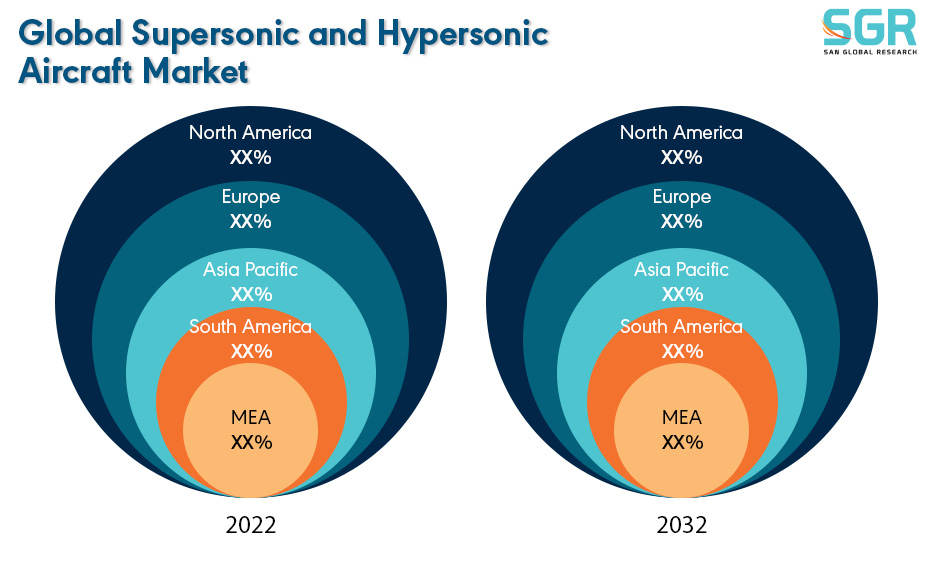
By Speed
Based on the Speed, the Supersonic and Hypersonic Aircraft Market is bifurcated by Supersonic and Hypersonic– where Supersonic is dominating and ahead in terms of share. As higher adoption rate in the commercial and military sector and the required development timeline for the supersonic aircraft are usually shorter and less costly and the significant demand for the supersonic aircraft in the defence sector is increasing which makes the supersonic segment dominate the market.
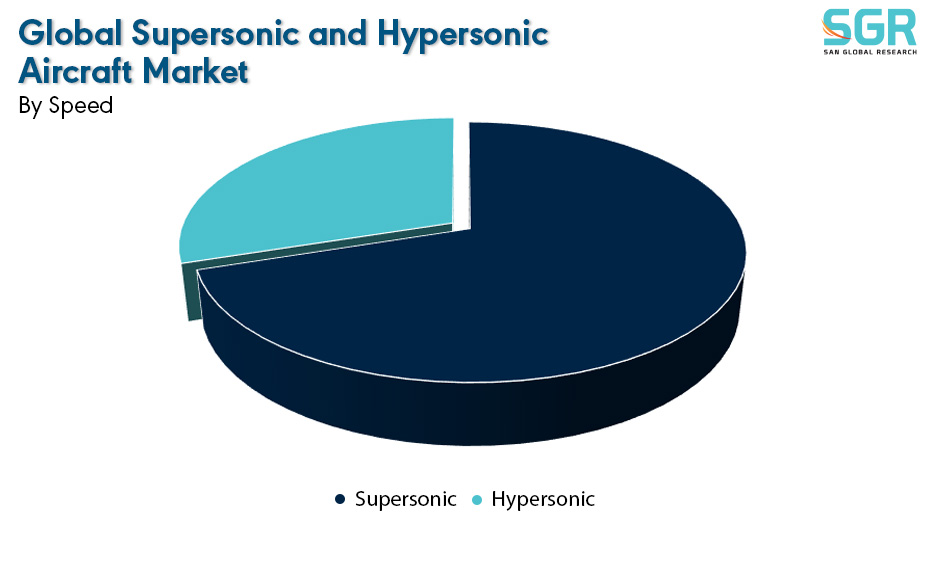
By Application
Based on the Application, the Supersonic and Hypersonic Aircraft Market is bifurcated by Military and Commercial– where Military is dominating and ahead in terms of share. The significant demand in the defence sector for hypersonic aircraft stems from their ability to offer greater speed, precision, and the capability to cover large distances swiftly. This enables the rapid delivery of time-sensitive payloads such as strike capabilities and reconnaissance missions, thus driving market growth. Additionally, heightened security concerns globally have led to a growing emphasis on modernizing military capabilities. Hypersonic technology is viewed as a critical component for enhancing defence capabilities, further fuelling the demand for hypersonic platforms in military applications.
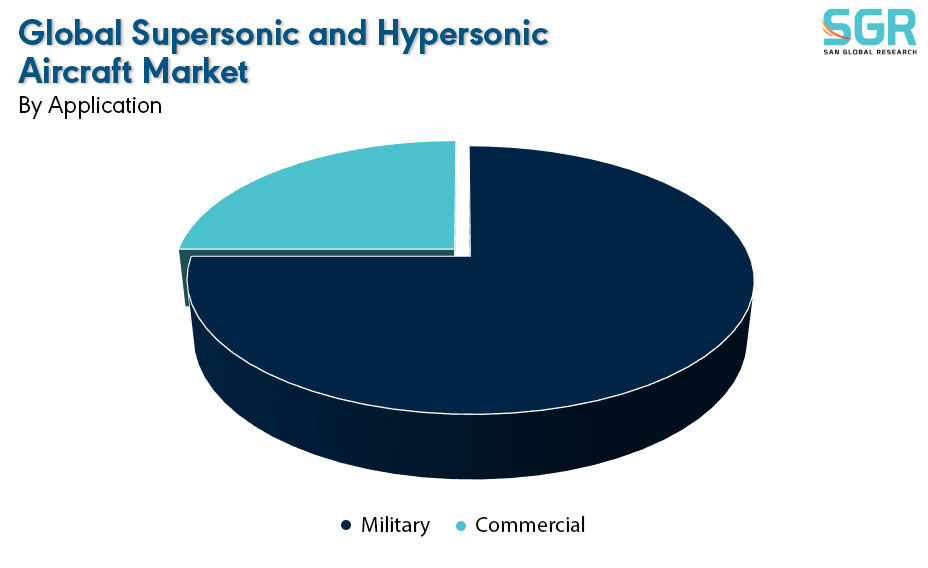
By Subsystems
Based on the Subsystems, the Supersonic and Hypersonic Aircraft Market is bifurcated by Avionics, Electrical Systems, Airframe, Propulsion, Control Systems, Landing Gear and Commercial and Military Payload Systems– where Subsystems is dominating and ahead in terms of share. The Airframe subsystem is an important component used in both the hypersonic and supersonic aircrafts for the structural integrity, aerodynamics. As the airframe subsystem provide the structural support to withstand high speed and temperature experienced when achieved supersonic or hypersonic speed.
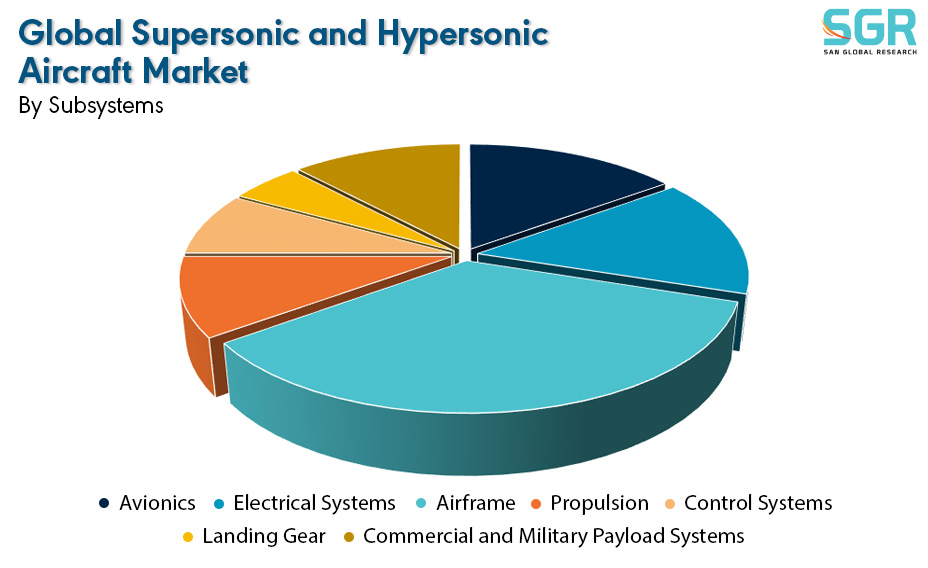
Key Players
• BAE Systems plc
• The Boeing Company
• Reaction Engines Limited
• Raytheon Technologies Corporation
• GE Group
Drivers
Technological Advancements
The Scramjet engine stands as one of the most recent innovations in jet engine technology, operating at supersonic speeds (Mach 6). In the Scramjet engine, fuel combustion occurs within a hypersonic airflow, where the speed may surpass the speed of sound. This engine functions as an air-breathing propulsive system, distinguishing it slightly from earlier jet engines. Unlike the ramjet engine, where airflow is subsonic (Mach numbers between 3 and 6) or slower than the speed of sound, the Scramjet engine is a modified version of earlier jet engines that do not require an onboard oxygen cylinder for travel beyond the atmosphere. Instead, it utilizes atmospheric oxygen, allowing for increased payload capacity. Consequently, the vehicle equipped with a Scramjet engine tends to be lighter, smaller, and faster. The high speed of the Scramjet engine generates a greater reaction, enabling it to operate efficiently within the supersonic range. It requires materials capable of withstanding the intense heat produced at speeds exceeding 5000 km/h. The Scramjet engine finds applications in both civilian and military sectors. These technological advancements have significantly boosted the market for supersonic and hypersonic aircraft.
Opportunity
Increasing Defence Demand
Due to the increasing defence demand and spike in the defence budget in various countries the market for supersonic and hypersonic aircraft in increasing exponentially. his growth is driven by factors such as the increasing demand for supersonic and hypersonic aircraft in the defence industry, modernization programs to replace aging 4th generation fighters, and the development of advanced propulsion systems and enhancements in traditional turbojet and turbofan engines. Additionally, the market is witnessing a shift towards unmanned aircraft, which offer lower weight and complexity, and are more suitable for high-speed adversary fleets.
| Report Attribute | Details |
| Market Value in 2023 | 4.33 Billion |
| Forecast in 2032 | 5.37 Billion |
| CAGR | CAGR of 2% from 2024 to 2032 |
| Base Year of forecast | 2023 |
| Historical | 2019-2022 |
| Units | Revenue in USD Million and CAGR from 2024 to 2032 |
| Report Coverage | Revenue forecast, Industry outlook, Competitive Landscape, Growth Factors, and Trends |
| Segments Scope | By Speed, By Application, By Subsystem |
| Regions Covered | North America, Europe, Asia Pacific, SA and MEA |
| Key Companies profiled | • BAE Systems plc • The Boeing Company • Reaction Engines Limited • Raytheon Technologies Corporation • GE Group |

 Description
Description
 Table of Content
Table of Content
 Gera Imperium Rise,
Gera Imperium Rise,  +91 9209275355
+91 9209275355


